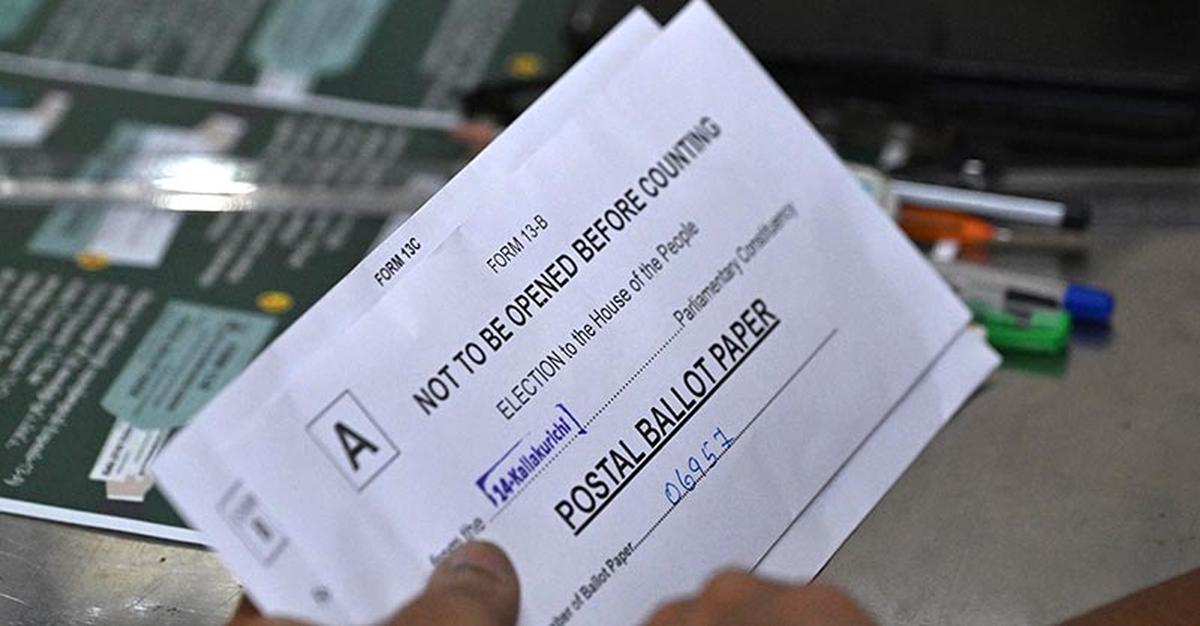On September 25, the Election Commission of India (ECI) issued a new directive altering the sequence of vote counting for all future elections. In a press note, which the commission referred to as a major initiative, it has directed that the penultimate round of counting from Electronic Voting Machines (EVMs) and their corresponding VVPATs cannot begin until the counting of all postal ballots in that centre is complete.
This procedural change follows a contentious 2024 general election that was marked by widespread allegations from opposition parties and candidates concerning the inconsistent handling of postal ballots.
Number of postal ballots has increased substantially by home voting: ECI
ECI stated that the recent initiatives, particularly the provision for home voting for Persons with Disabilities (PwDs) and senior citizens aged 85 and above, led to a substantial increase in the number of postal ballots.
However, on the day of counting, the process traditionally begins with the counting of postal ballots at 8:00 AM, followed by the opening of EVMs at 8:30 AM. Under the previous guidelines, the counting of EVM votes could proceed independently of the postal ballot tally. This concurrent process often meant that in constituencies with a large number of postal votes, the EVM counting would conclude and a clear winner would emerge while the postal ballot counting was still underway. This created scenarios where the final result could theoretically be altered by the postal ballots, leading to confusion and, at times, controversy. The ECI’s new directive addresses this ambiguity.
The new mandate for counting day
The Commission’s press note lays out the new protocol in unambiguous terms. It establishes a clear hierarchy in the counting process by prioritising the finalisation of the postal ballot tally. This structural change is intended to make the declaration of results more methodical.
In its official communication, the Election Commission articulated the core of its decision, stating:
“Although, counting of postal ballots generally gets completed before counting of EVMs, in order to ensure uniformity and utmost clarity in the counting process, the Commission has decided that, henceforth, the penultimate (second last) round of EVM/VVPATs counting shall be taken up only after the counting of Postal Ballot Papers is completed, at the counting centre, where postal ballot counting is being done.”
The ECI has also instructed Returning Officers (ROs) to manage the increased workload. In constituencies with a high volume of postal ballots, ROs are now required to arrange for a sufficient number of counting tables and deploy adequate staff to prevent unnecessary delays in the overall result declaration.
The copy of ECI’s press note dated 25.09.2025 can be read here
A shadow of past allegations
The ECI’s directive is being viewed as a response to the significant controversies that clouded the counting process during the 2024 Lok Sabha elections. Several opposition parties and independent candidates had raised serious allegations regarding the handling of postal ballots, claiming that established procedures were not being followed uniformly across counting centres.
Rule 54A and the amendment in protocol
The legal framework for the counting of votes is primarily governed by the Conduct of Elections Rules, 1961. Specifically, Rule 54A outlines the procedure for the counting of votes received by post. The rule has always stipulated that the Returning Officer should first deal with the postal ballot papers before proceeding to other stages. However, the interpretation and implementation of this rule have varied.
Previously, the instruction to count postal ballots first was often treated as a procedural guideline to begin the day, not as a strict precondition for the progression of EVM counting. The rules did not explicitly forbid the concurrent counting of EVMs and postal ballots after the initial 30-minute head start. This ambiguity allowed for situations where the EVM counting could outpace the more manually intensive postal ballot counting. The latest directive amends this operational interpretation by creating a hard stop. By linking the commencement of the second-to-last round of EVM counting to the absolute completion of the postal ballot count, it transforms a guideline into a mandatory, sequential checkpoint and removes the discretionary power of the RO in this matter.
Change comes amid other technological shifts
This change is part of a series of procedural and technological adjustments being made by the ECI. Alongside the counting reforms, the ECI has also been implementing other changes to its digital infrastructure. The poll panel recently launched a new e-sign feature on its ECINET portal, an integrated platform that consolidates over 40 ECI mobile applications. This feature now requires applicants for new voter registration, deletions, or corrections to verify their identity through an Aadhaar-linked OTP.
This two-factor authentication process, managed through the Centre for Development of Advanced Computing (CDAC), is intended to reduce fraudulent applications. This move to Aadhaar-based authentication is a departure from the previous system, which relied on linking a phone number to an EPIC card without similar identity verification.
Related:
